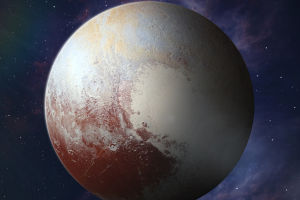The universe, a term encompassing the vast expanse of space and the myriad celestial bodies and diffuse matter within it, presents one of the most intricate and captivating mysteries in the realm of science.
The origins of our universe constitute a profound puzzle that has intrigued scientists for millennia. It is a dynamic, ever-evolving material world, subject to ceaseless motion and transformation.
For thousands of years, scientists and thinkers have sought answers regarding the inception of the universe. Today, the prevailing theory, widely accepted by the scientific community, posits that the universe emerged from an event known as the Big Bang, an explosive cataclysm that unfolded approximately 13.7 billion years ago.
Prior to the Big Bang, the universe existed in a state of extraordinary density and energy. All matter was compressed into an inconceivably minuscule space, smaller than the nucleus of an atom. Over time, matter gradually coalesced, accumulating within this confined space.
As these substances congregated, local pressure and energy began to mount, causing the material sphere's volume to expand continually.
Around 13.8 billion years ago, this process reached a critical juncture, culminating in the simultaneous release of an immensely potent burst of energy. This pivotal moment marked the inception of the universe's rapid and staggering expansion.
The 1960s ushered in a pivotal discovery for cosmology as astronomers detected cosmic microwave background radiation—a faint, evenly distributed radiation suffusing the universe.
This discovery provided substantial support for the Big Bang theory, with scientists interpreting this radiation as residual heat, a relic from the universe's birth.
In the wake of the Big Bang, matter gradually coalesced into larger structures, including galaxies, stars, and planets. The formation and evolution of stars are pivotal processes in the universe's unfolding narrative. Stars undergo nuclear fusion within their cores, releasing energy and light, becoming the universe's luminous beacons.
Within the cosmos, stars and galaxies amass into colossal structures, termed galaxy clusters and superclusters. The study of these structures, their interactions, formation, and evolution, forms an integral part of the overarching exploration of the universe.
By scrutinizing galaxy clusters, scientists gain valuable insights into the distribution and properties of dark matter, an enigmatic and abundant cosmic substance that exerts gravitational influence on the motion of galaxies and galaxy clusters.
Dark matter and dark energy stand as two of the most confounding mysteries in cosmology. Their nature and origin remain elusive, yet they exert profound effects on the universe. Dark matter's gravitational pull shapes the universe's structure, while dark energy is believed to fuel the universe's accelerated expansion.
The comprehension of the universe's origin and evolution stands as a pinnacle achievement of 20th-century science, borne from decades of pioneering experimentation and theoretical inquiry.
State-of-the-art telescopes, whether terrestrial or in space, capture light from galaxies situated billions of light-years away, offering glimpses into the universe's infancy.
The enigma of the universe's origin and evolution continues to inspire awe and curiosity. Scientists press onward, engaging in ongoing observation and study to unearth deeper revelations.
As we advance in both experimental and theoretical realms, we anticipate that our understanding of the universe will continue its expansion and maturation, ushering in fresh insights into the mysteries of the cosmos.


